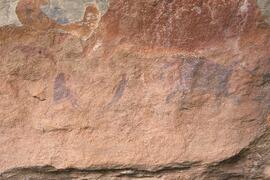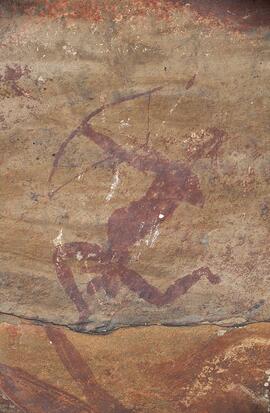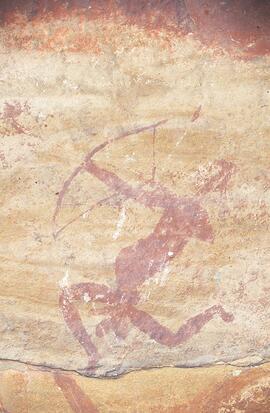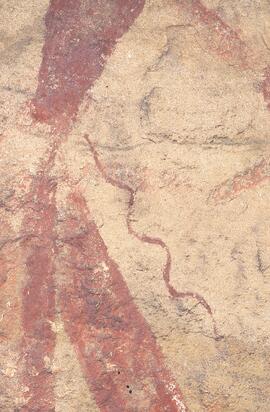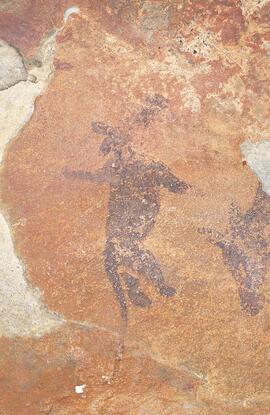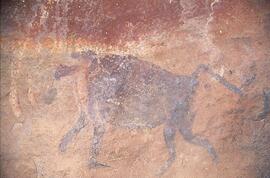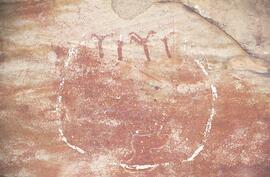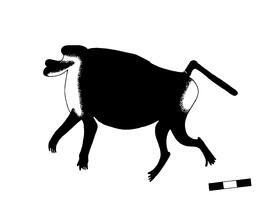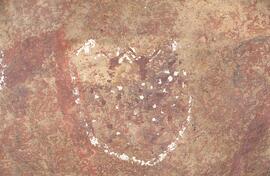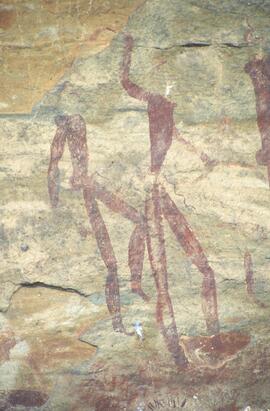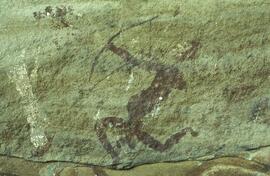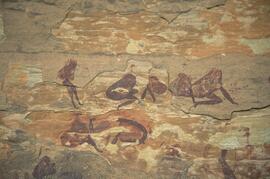ZA NASMUS NASMUS-NASMUS-RSA-MEL8-26.jpg
·
Item
·
11/11/2000
Part of National Museum
Baboons are painted and engraved more frequently than jackals, and they also feature more frequently in Bushman myth and folklore. The /Xam believed that, like the lion, the baboon had similar powers to those of shamans. It was supposed to draw these powers from a small stick of a plant, which it kept in its left cheek. Some depictions of baboons show a whole troop with males, females and babies. There are also therianthropic baboons which express the closeness of baboons to people and, more important, the association between baboons and shamans. Melrose VIII
